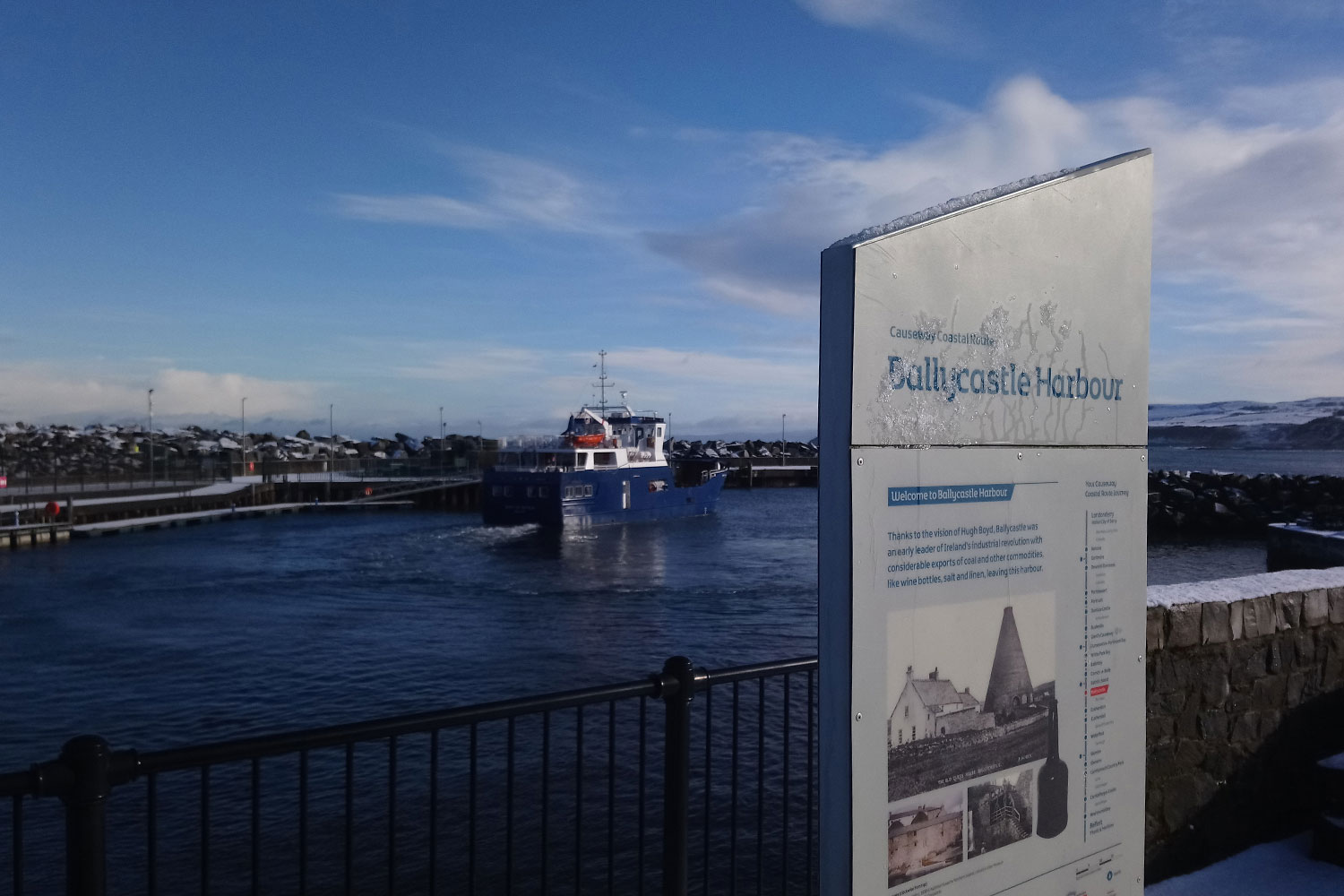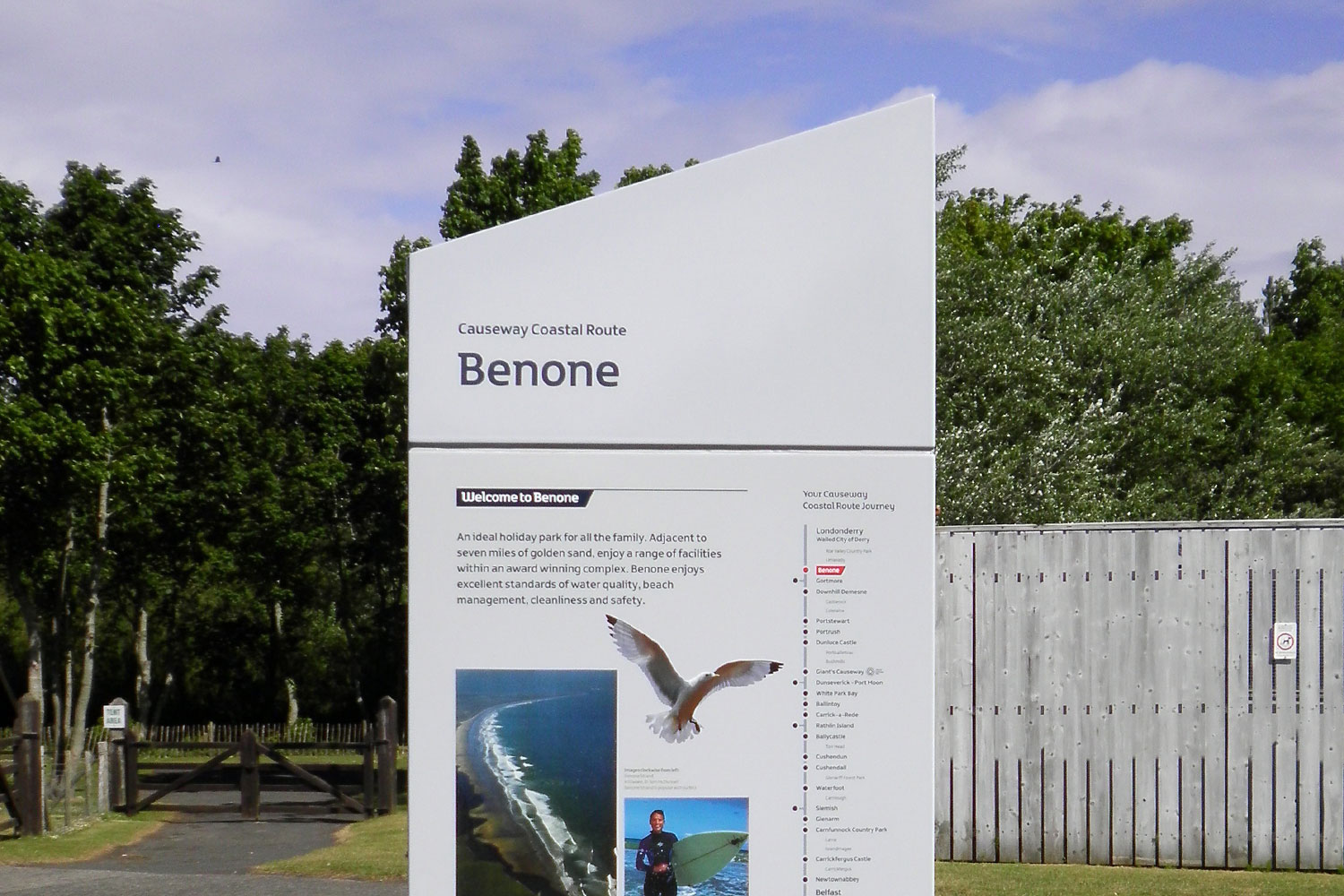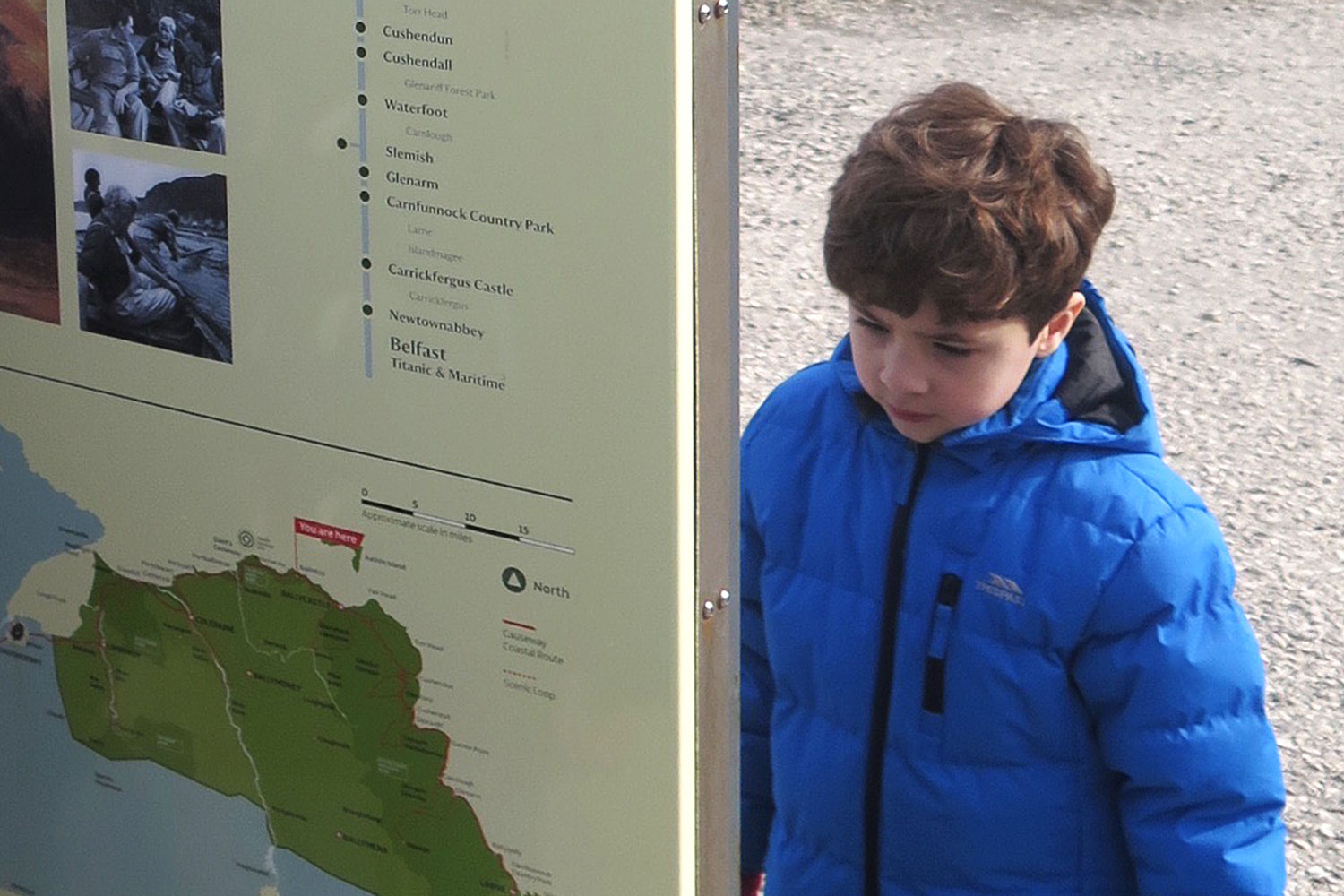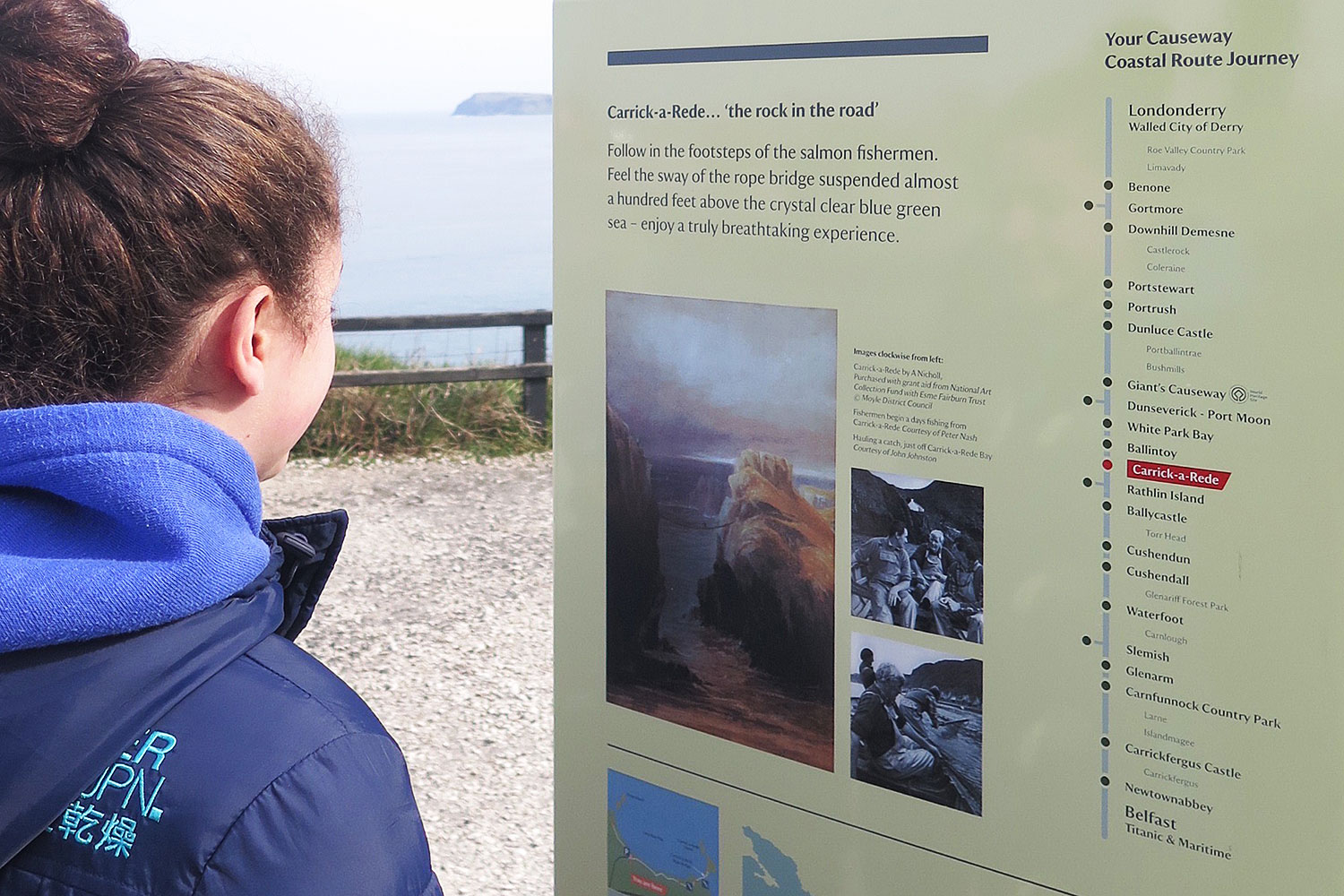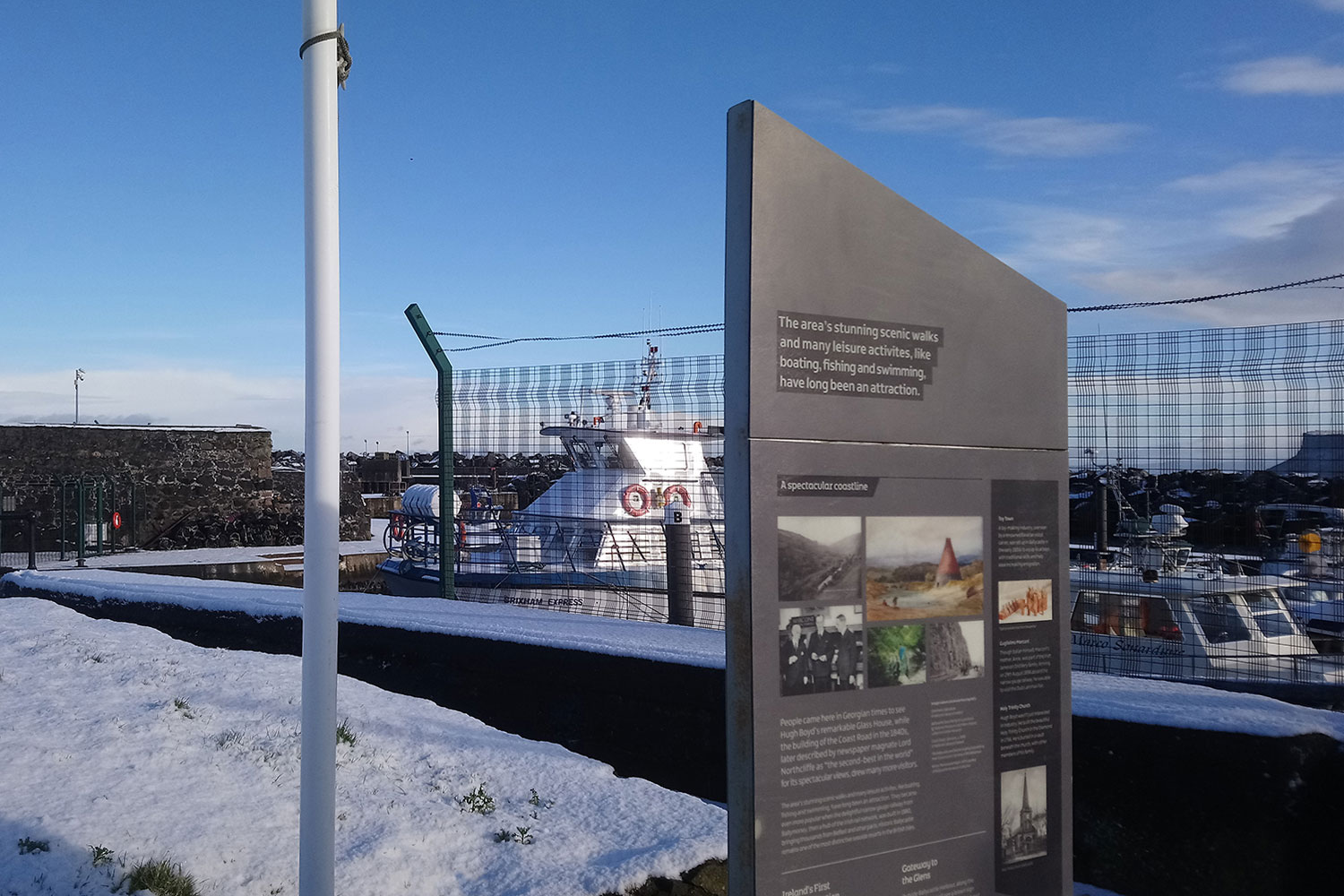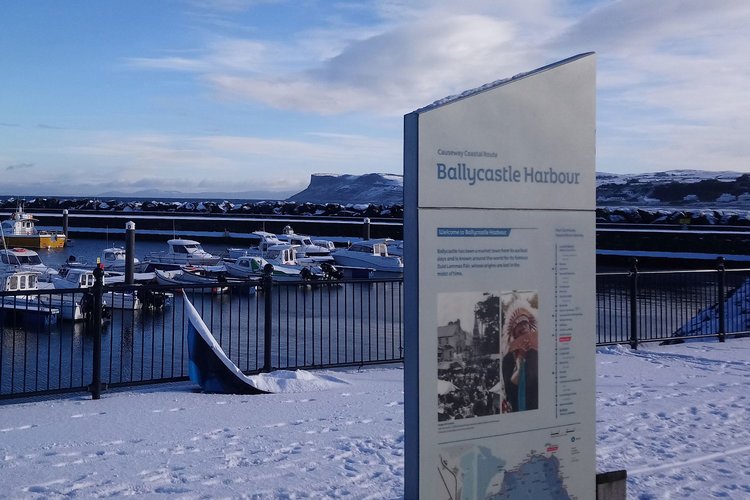Causeway Coastal Route
The Causeway Coastal Route (CCR) is Northern Ireland’s premier
strategic driving route. In 2006, the Guardian ranked it the 2nd most spectacular scenic drive in the world. It aim is to encourage the dispersal
of visitors throughout the region, acting as a catalyst for future sustainable tourism development .
The CCR is fundamental to the Causeway Signature Project (one
of five signature projects for Northern Ireland) and is the nucleus
of sustainable tourism development within the region.
The route covers over 80 miles of stunning scenery including 9 scenic inland routes and 3 ‘Areas of Outstanding Natural Beauty’
The Antrim Coast & Glens
Causeway Coast
Binevenagh.
We were commissioned to design an integrated interpretive solution
for the 80-mile Causeway Coastal Route, including specification of materials, concept design, development of visual language, detailed
design and – in the case of Moyle District Council – full scripting,
writing and proofing services.
Key to the success of the project, was our ability to balance the requirements of a range of sites and stakeholders, including the
National Trust, which already has a highly sophisticated brand identity.
We devised a hierarchy of type and an interpretive framework which
worked on a number of levels, from the 80-mile route down to each
of the 115 individual panels.
Within each interpretive panel, primary content provided the visitor with site-specific information; secondary content provided related information which could be understood in the context of the site. Finally, tertiary ‘factoids’ and ‘did you know?’ snippets provided the visitor with interesting information that they could easily take away with them.
We looked at how the site’s interpretation might be linked and divided across its signage, assessing each site and identifying its best-known attractions as well as features which lay ‘off the beaten track’.
While the interpretation at each site had to be capable of standing alone,
the impact of the CCR had to be more than the sum of its constituent parts.
A key objective of the CCR was to situate visitors to each site within
the context of the broader environment and to make them aware of other sites within the region. A second objective was to communicate to visitors that, while the route is coastal, it does not necessarily have to be explored
in a linear fashion and that a CCR journey can begin at any site.
We resolved both of these issues through the use of a map and schematic journey line device, which highlighted the broader context as well as the visitor’s location within it.
Drawing on our extensive and
in-depth local knowledge, we
ran a workshop with the National Trust to help establish the core narrative and key themes at each of their sites.
Interpretation and exhibition design
Audience Engagement Strategy
Guided/Self-guided accessible tour development
Design development and production
Technical design, production, installation, production and snagging
Signage and wayfinding production
Management of AV subcontractors
Project Management

